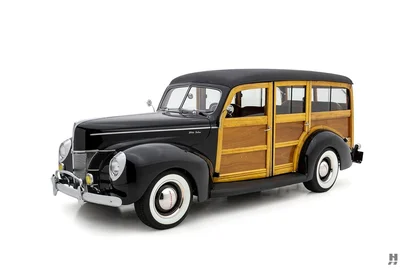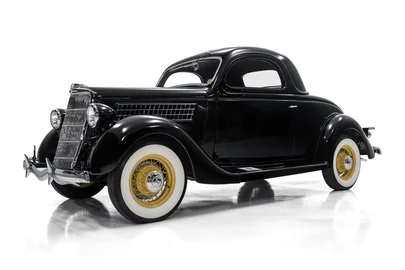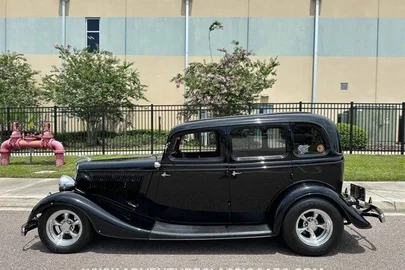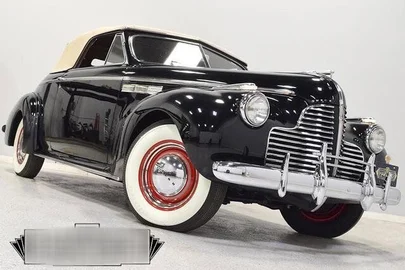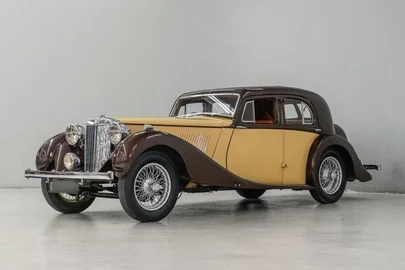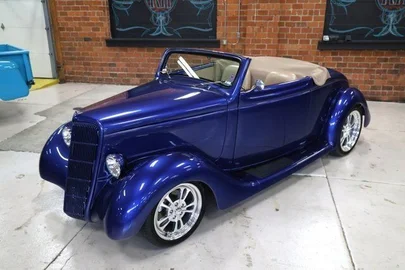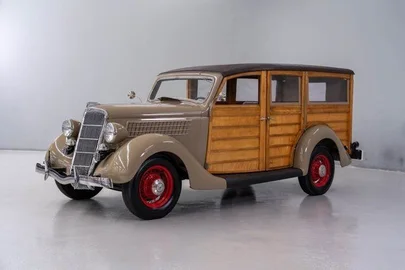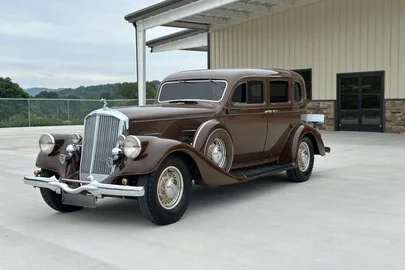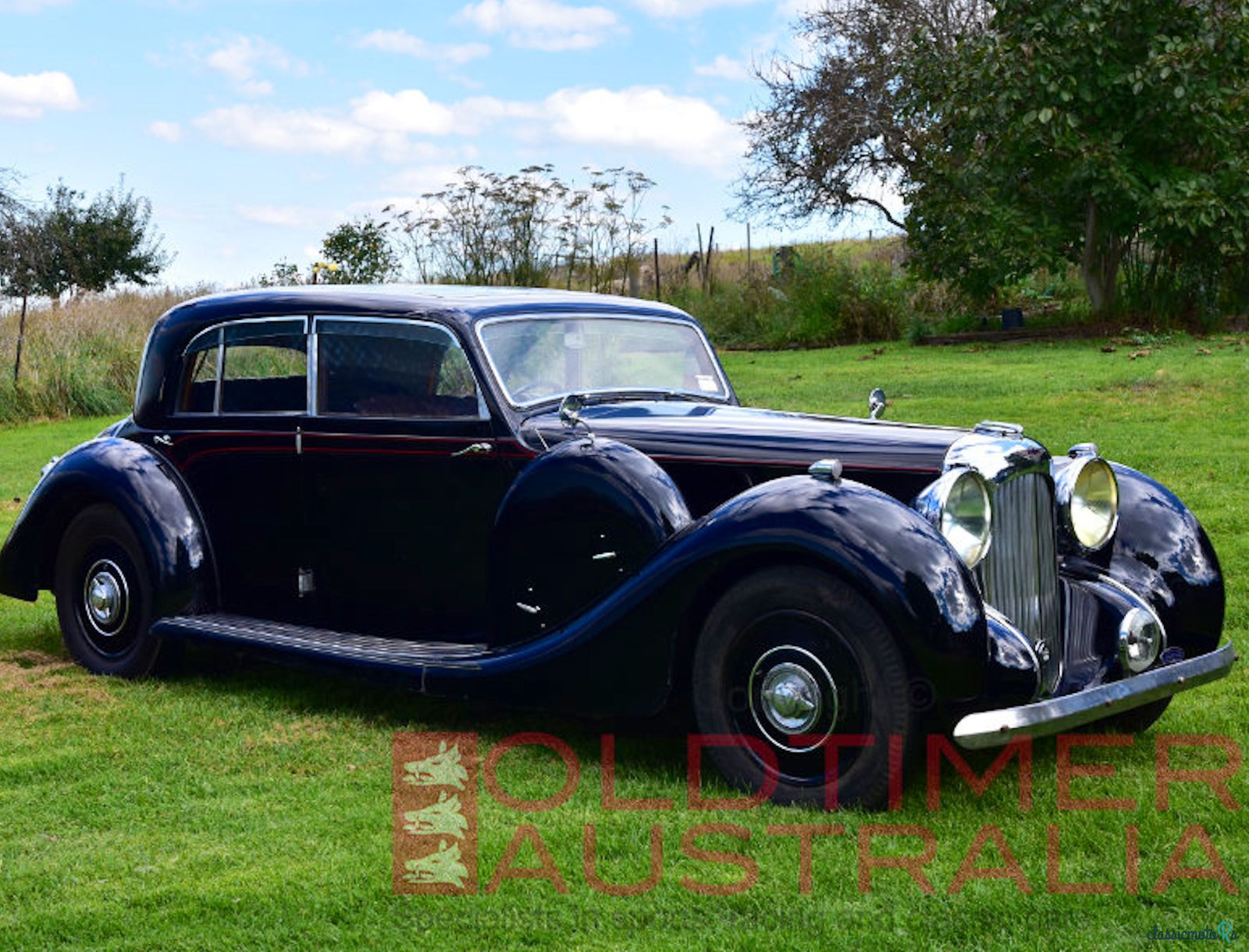
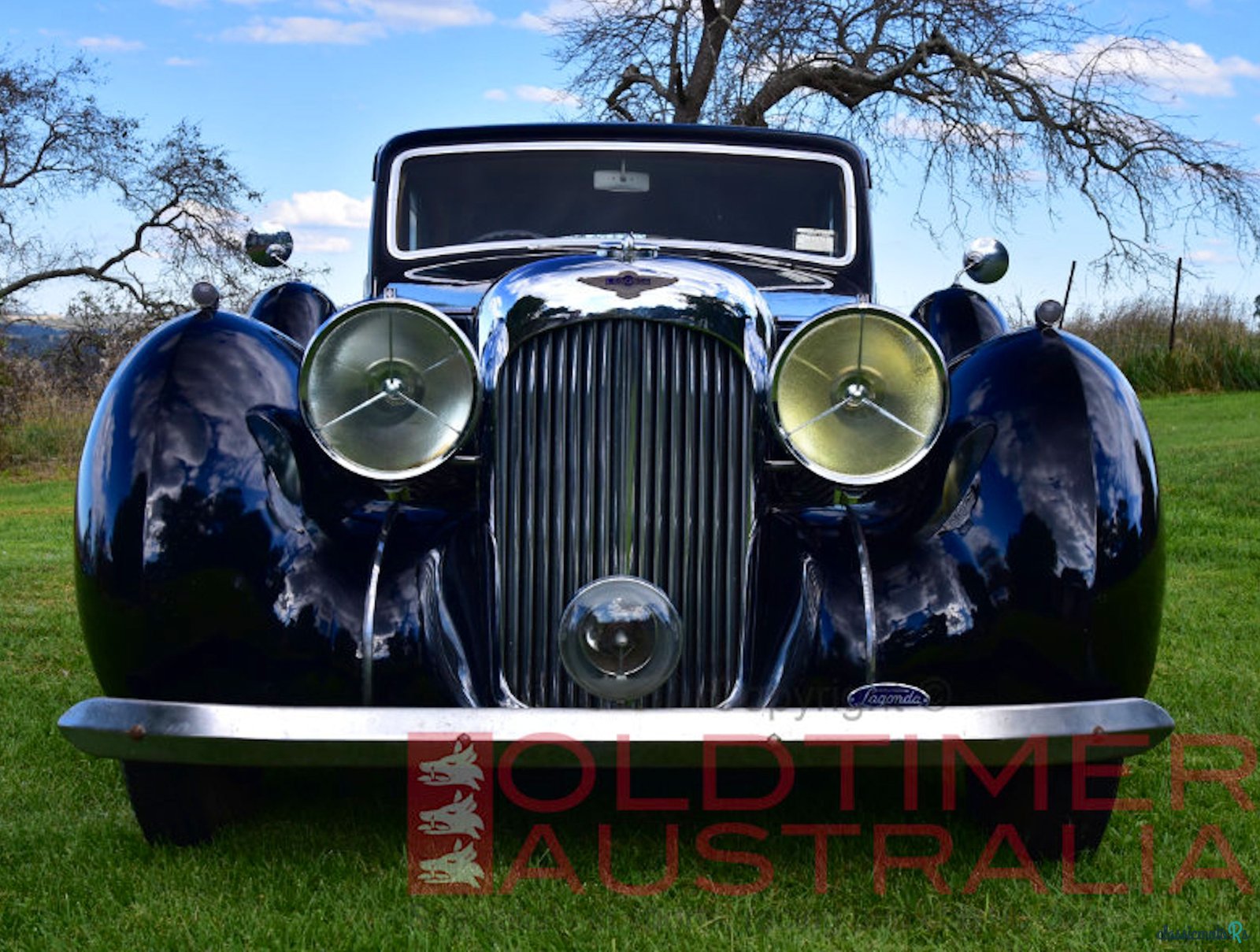
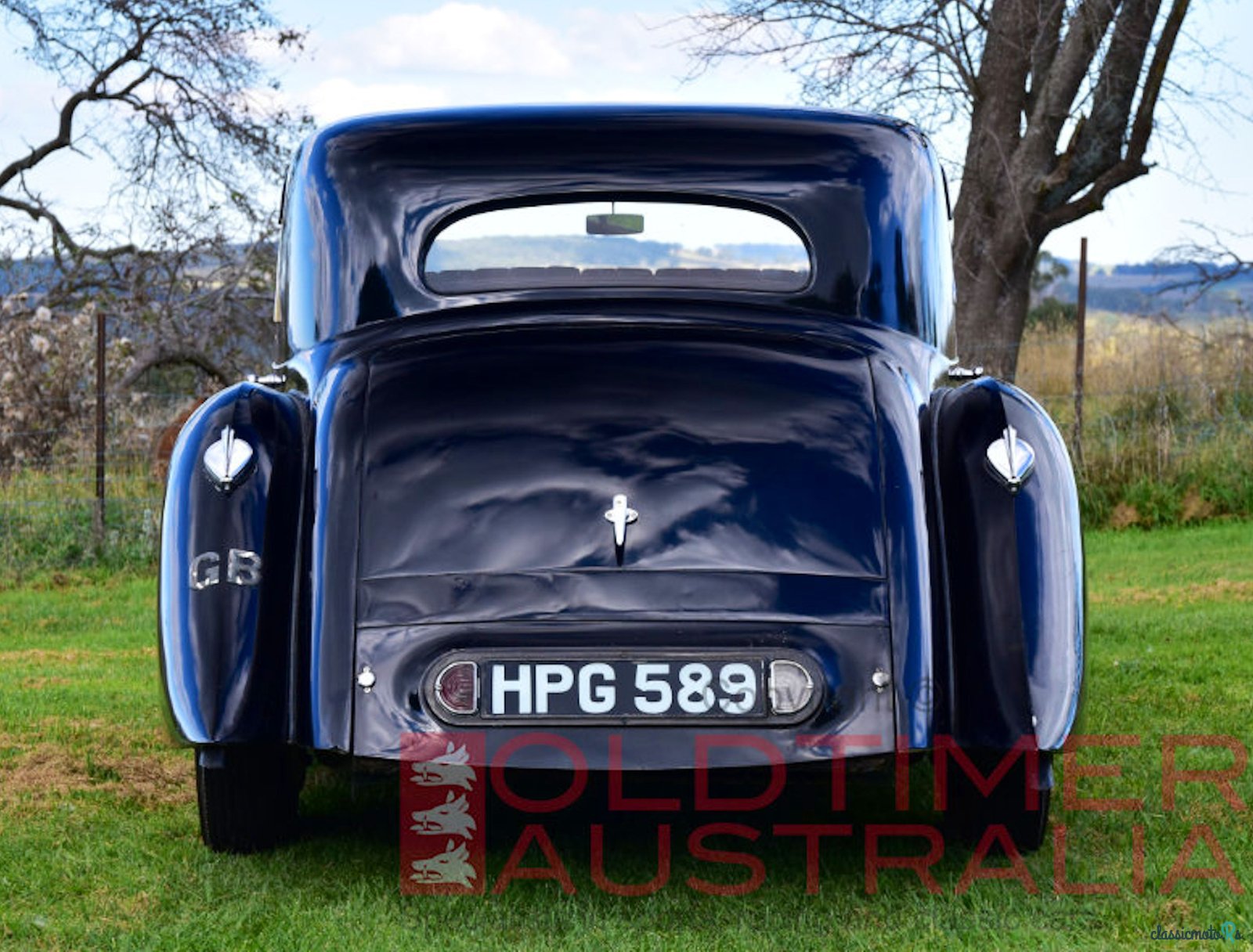
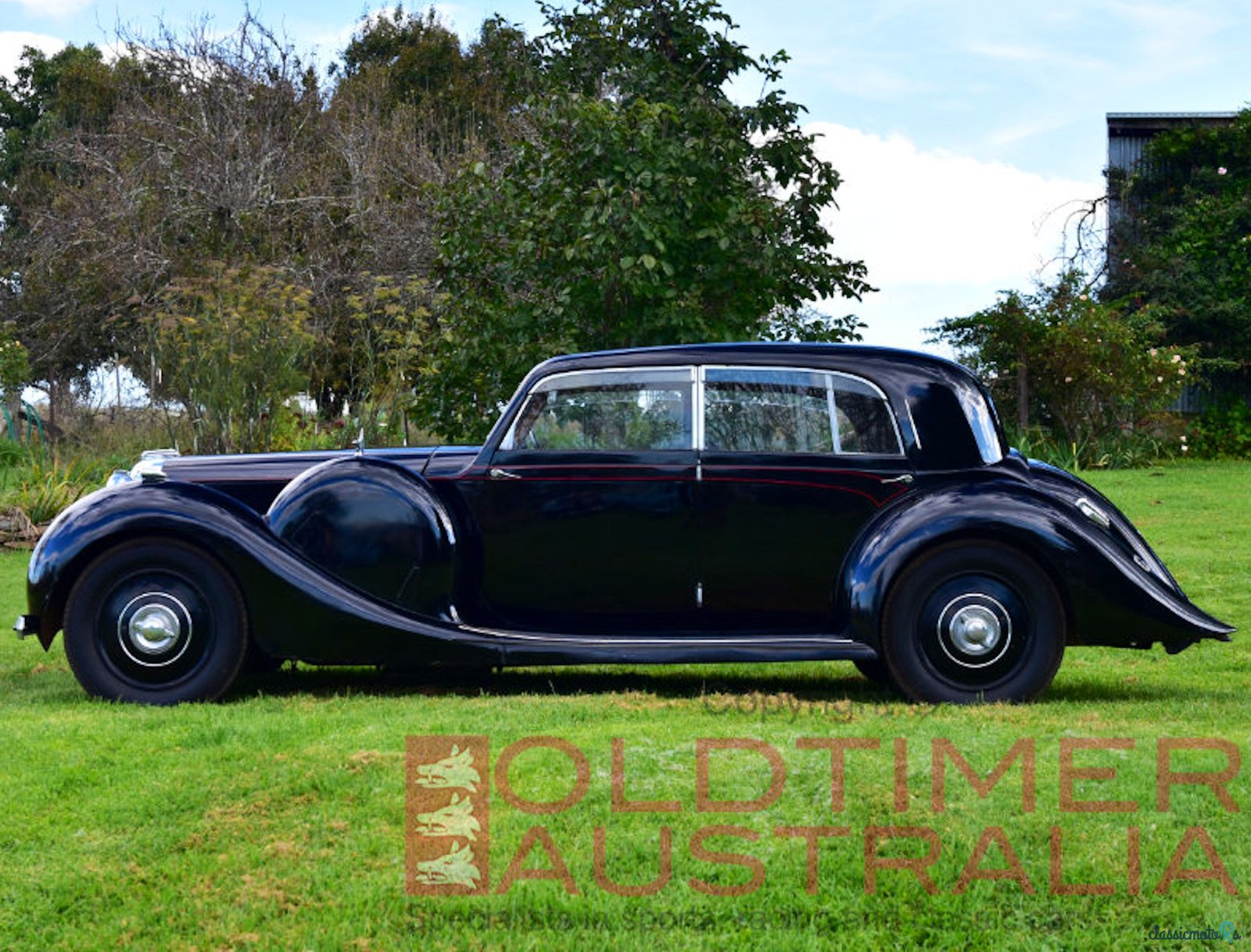
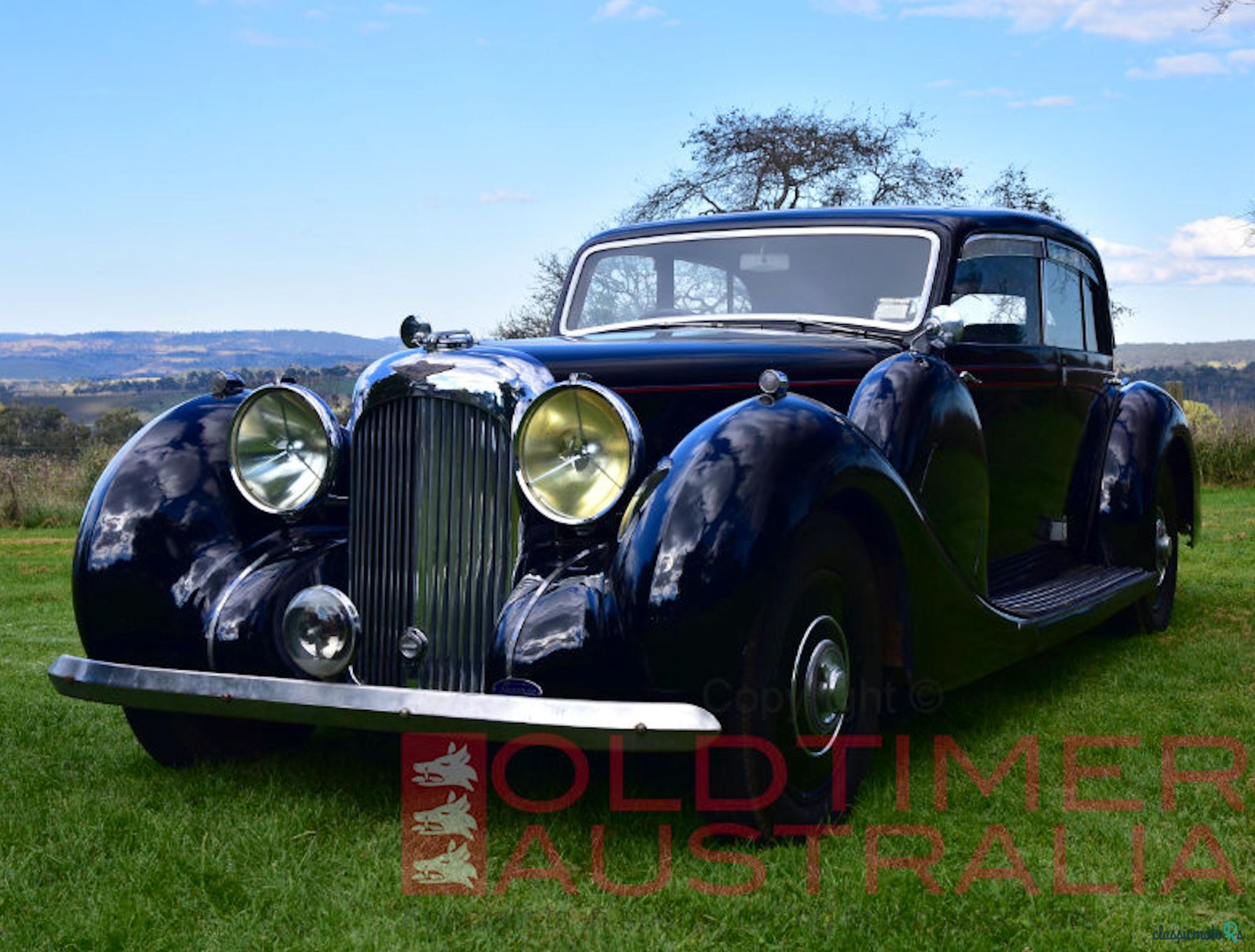
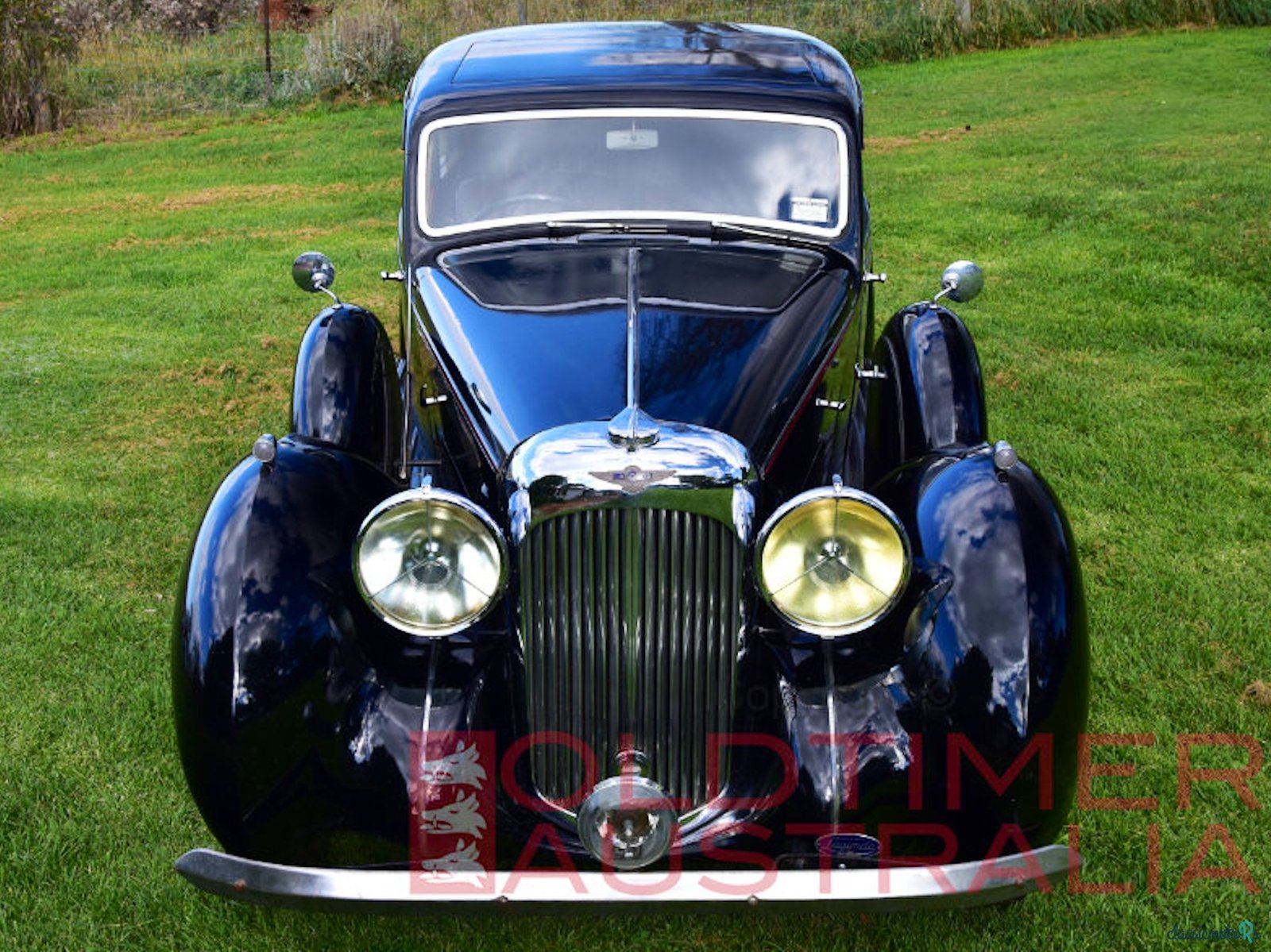
6 photos
1939' Lagonda V12 Saloon
Report This Ad!Rate This!Bookmark This
£77,950Published 1 February 2023ID: dA9UWL
Expired
2 years, 10 months ago
2 years, 10 months ago
Information from the owner
Body: Sports Car
Age: 84 years
Exterior color: Brown
Electronics: AM/FM Radio
Seller's comments about 1939' Lagonda V12 Saloon
Wilbur Gunn was born in 1859 in the Shawnee settlement “Lagonda” in modern day Springfield, Ohio, USA. Gunn was a former opera singer who became a British national in 1891. After moving to the UK, Gunn further pursued a career as an artist and singer. Fortunately, he wasn’t that successful and in 1898 he started building motorcycles. Gunn was quite successful building motorcycles, so much so that a Lagonda represented Great Britain in international cup races. In 1905 he won the London – Edinburgh trail. In 1906 Gunn founded a company and he started building cars. The name Lagonda was the Shawnee Indian name for what is now Buck Creek in Gunn’s native Springfield, Ohio and Gunn decided to use that name for his company. His first car was launched in 1907, the Lagonda 20HP, 6 cylinder Torpedo. The car was quite a success and in 1910 Gunn won the Moscow – St Peterburgs trial in the car. That win resulted in quite a few export orders from Russia.
Already in the prewar period Lagonda started producing some very advanced cars. In 1913 the company introduced 11. 1, a small car with a 1, 099cc four cylinder engine. By 1914 this model featured a panhard rod, a rivetted unibody body and the first ever fly off handbrake.
After World War I, production of the 11. 1 continued. The car evolved into the 11. 9, which had a larger 1400cc engine and standard electric lighting. The 11. 9 was built until 1923 and the updated 12 until 1926.
After Gunn had passed away in 1920, three existing directors took charge of the company led by Colin Parbury. In 1925 Lagonda produced its first sports model, the 14/ 60 which featured a twin cam 1, 954 cc four cylinder engine and hemispherical combustion chambers. It was superseded by the 2. 0 litre speed model with a higher output engine in 1927. By 1930 that car could be ordered with a supercharger. A lengthened chassis version, the 16/ 65, with 6 cylinder, 2. 4 litre engine was available from 1926 to 1930. The final car of the 1920’s was the 3. 0 Litre using a 2931cc, 6 cylinder engine. This continued until 1933 when the engine grew to 3, 181 cc and was also available with a complex 8 speed Maybach transmission as the Selector Special.
A new model for 1933 was the 16-80 using a 2-litre Crossley engine with pre selector gearbox from 1934. A new small car, the Rapier came along in 1934 with 1, 104cc engine and pre selector gearbox. This lasted until 1935 but more were made until 1938 by a separate company. At the other extreme was the near 100mph, 4. 5 litre M45 with Meadows supplied 6 cylinder 4, 467cc engine. An out and out sporting version the M45R Rapide, with tuned M45 engine and a shorter chassis was also offered. Car dealer Arthur Fox entered two Lagonda M45R’s into the 1935 Le Mans 24 hour race and despite suffering from damaged steering and having hardly any oil left in the engine, the Lagonda driven by John Hindmarsh and Luís Fontes won that year’s race.
Alan P Good managed to purchase the company in 1935, outbidding Rolls-Royce. He then also managed to persuade WO Bentley to leave Rolls-Royce and join Lagonda as a Technical Director. The 4. 5-litre range now became the LG45 with lower but heavier bodies and also available in LG45R Rapide form. The LG45 came in 3 versions known as Sanction 1, 2 and 3 each with more Bentley touches to the engine. 1938 saw the introduction of the LG6 with independent front suspension by torsion bar and hydraulic brakes.
In the meantime, Bentley, together with ex-Rolls Royce employees Stuart Tresillian and Charles Sewell and design expert Frank Feeley, had been working on his new masterpiece, the Lagonda V12. Launched in 1937, the Lagonda V12 was powered by a 4, 480cc V12 engine that delivered 180 bhp and was said to be capable of going from 7 to 105 mph in top gear and to rev to 5, 000 rpm.
Production of the Lagonda V12 started in 1938 and finished in 1940. Coachwork was offered either inhouse by Lagonda or one of the other independent coach builders. To accommodate the various body designs, upon ordering customers were given the choice of either a 124 inch wheel base, a 132 inch wheel base or a 138 inch wheel base. In total Lagonda produced 189 V12’s, of which it is understood only 10 had the 138 inch long wheel base chassis.
Oldtimer Australia is delighted to offer for sale an extremely 1939 Lagonda V12 ‘Long Saloon’ with coachwork by Lagonda.
The car has a rich and fascinating history. The current owner purchased this car in the UK in 1983 and subsequently imported it into Australia where it became part of a significant collection of Lagonda and Alvis motor cars.
The car has a replacement UK registration book or log book which was issued on 8th January 1946 in the city of Sheffield, UK. The registration book confirms the car was first registered in the UK on 28th February 1939. It’s not unlikely to assume the original logbook got lost during World War II. The log book shows the car was registered with the number plate HPG 589. The number plate suggests the car was first registered in the county of Surrey, just south of London in the UK.
In 1946 the car was registered in the name of Roland Arthur Kirkby from Sheffield. The registration book shows the first change of ownership in May 1949. The car was then registered in the name of a company, General Refractories Ltd, also from Sheffield. However, Kirkby was chairman of this company so it is most likely that the car was just transferred to the business but he kept driving it.
The second change of ownership was recorded in the registration book on the 10th of July 1955. The car was then registered in the name of Stephen Brown. In 1958 the car was sold to Jack Hill from Reading, UK. According to a document in the file that was when the car was last registered in the UK. It is not known what happened to the car during Mr Hill's ownership but there is a UK MOT certificate on file from March 1969 noting the mileage as 5, 945 miles. The car was still carrying its original registration HPG 589. Subsequent MOT certificates from 1975, 1977, 1979, 1981 show the mileage as 6, 098 miles, 6, 183 miles, 6, 404 miles and 7, 041 miles. The car was obviously used sparingly at that time.
The next owner mentioned in the registration book is George Ewart Cree from Westbury on Trym, a small town near Bristol, UK. The registration book shows a change into his name on the 1st September 1969, however, there are receipts on file in his name from as early as April 1967. Mr. Cree did quite a bit of work on the Lagonda over the next couple of years. There are several receipts on file documenting this.
As noted above this 1939 Lagonda V12 ‘Long Saloon’ was sold to its current owner in 1983. It has therefore remained in continuous ownership for almost 40 years!
This car is an incredible 'time capsule' and it presents exceptionally well for its age. It is understood that the car still wears its original paint. The upholstery, roof lining and dress timber are also original. The main carpets in the car have been removed.
After a long hibernation period the car underwent a mechanical rebuild which was completed in 2015 by a Lagonda specialist. Since then, it has been used sparingly. The car was used twice as a wedding car, it made an appearance at a Lagonda gathering in NSW and more recently it was shown at the Sydney Harbour Concours d'Elegance.
This is a car that the more time you spend studying the more detail you will find. We love the original Motorola radio as well as the Lagonda instruments and controls. A nice touch is that the last registration sticker, which shows an expiry date of 4th February 1984, is still on the front windscreen!
The car runs and drives, however, given its recent limited use we would recommend a mechanical check over and service.
Highlights:
- Rare Lagonda V12 'Long Saloon' with sunroof.
- Known history from new.
- Early documentation on file, including the UK registration book issued in 1946.
- An incredible ‘time capsule’, being a very original car.
- A running and driving car.
Price AUD $129, 950
Already in the prewar period Lagonda started producing some very advanced cars. In 1913 the company introduced 11. 1, a small car with a 1, 099cc four cylinder engine. By 1914 this model featured a panhard rod, a rivetted unibody body and the first ever fly off handbrake.
After World War I, production of the 11. 1 continued. The car evolved into the 11. 9, which had a larger 1400cc engine and standard electric lighting. The 11. 9 was built until 1923 and the updated 12 until 1926.
After Gunn had passed away in 1920, three existing directors took charge of the company led by Colin Parbury. In 1925 Lagonda produced its first sports model, the 14/ 60 which featured a twin cam 1, 954 cc four cylinder engine and hemispherical combustion chambers. It was superseded by the 2. 0 litre speed model with a higher output engine in 1927. By 1930 that car could be ordered with a supercharger. A lengthened chassis version, the 16/ 65, with 6 cylinder, 2. 4 litre engine was available from 1926 to 1930. The final car of the 1920’s was the 3. 0 Litre using a 2931cc, 6 cylinder engine. This continued until 1933 when the engine grew to 3, 181 cc and was also available with a complex 8 speed Maybach transmission as the Selector Special.
A new model for 1933 was the 16-80 using a 2-litre Crossley engine with pre selector gearbox from 1934. A new small car, the Rapier came along in 1934 with 1, 104cc engine and pre selector gearbox. This lasted until 1935 but more were made until 1938 by a separate company. At the other extreme was the near 100mph, 4. 5 litre M45 with Meadows supplied 6 cylinder 4, 467cc engine. An out and out sporting version the M45R Rapide, with tuned M45 engine and a shorter chassis was also offered. Car dealer Arthur Fox entered two Lagonda M45R’s into the 1935 Le Mans 24 hour race and despite suffering from damaged steering and having hardly any oil left in the engine, the Lagonda driven by John Hindmarsh and Luís Fontes won that year’s race.
Alan P Good managed to purchase the company in 1935, outbidding Rolls-Royce. He then also managed to persuade WO Bentley to leave Rolls-Royce and join Lagonda as a Technical Director. The 4. 5-litre range now became the LG45 with lower but heavier bodies and also available in LG45R Rapide form. The LG45 came in 3 versions known as Sanction 1, 2 and 3 each with more Bentley touches to the engine. 1938 saw the introduction of the LG6 with independent front suspension by torsion bar and hydraulic brakes.
In the meantime, Bentley, together with ex-Rolls Royce employees Stuart Tresillian and Charles Sewell and design expert Frank Feeley, had been working on his new masterpiece, the Lagonda V12. Launched in 1937, the Lagonda V12 was powered by a 4, 480cc V12 engine that delivered 180 bhp and was said to be capable of going from 7 to 105 mph in top gear and to rev to 5, 000 rpm.
Production of the Lagonda V12 started in 1938 and finished in 1940. Coachwork was offered either inhouse by Lagonda or one of the other independent coach builders. To accommodate the various body designs, upon ordering customers were given the choice of either a 124 inch wheel base, a 132 inch wheel base or a 138 inch wheel base. In total Lagonda produced 189 V12’s, of which it is understood only 10 had the 138 inch long wheel base chassis.
Oldtimer Australia is delighted to offer for sale an extremely 1939 Lagonda V12 ‘Long Saloon’ with coachwork by Lagonda.
The car has a rich and fascinating history. The current owner purchased this car in the UK in 1983 and subsequently imported it into Australia where it became part of a significant collection of Lagonda and Alvis motor cars.
The car has a replacement UK registration book or log book which was issued on 8th January 1946 in the city of Sheffield, UK. The registration book confirms the car was first registered in the UK on 28th February 1939. It’s not unlikely to assume the original logbook got lost during World War II. The log book shows the car was registered with the number plate HPG 589. The number plate suggests the car was first registered in the county of Surrey, just south of London in the UK.
In 1946 the car was registered in the name of Roland Arthur Kirkby from Sheffield. The registration book shows the first change of ownership in May 1949. The car was then registered in the name of a company, General Refractories Ltd, also from Sheffield. However, Kirkby was chairman of this company so it is most likely that the car was just transferred to the business but he kept driving it.
The second change of ownership was recorded in the registration book on the 10th of July 1955. The car was then registered in the name of Stephen Brown. In 1958 the car was sold to Jack Hill from Reading, UK. According to a document in the file that was when the car was last registered in the UK. It is not known what happened to the car during Mr Hill's ownership but there is a UK MOT certificate on file from March 1969 noting the mileage as 5, 945 miles. The car was still carrying its original registration HPG 589. Subsequent MOT certificates from 1975, 1977, 1979, 1981 show the mileage as 6, 098 miles, 6, 183 miles, 6, 404 miles and 7, 041 miles. The car was obviously used sparingly at that time.
The next owner mentioned in the registration book is George Ewart Cree from Westbury on Trym, a small town near Bristol, UK. The registration book shows a change into his name on the 1st September 1969, however, there are receipts on file in his name from as early as April 1967. Mr. Cree did quite a bit of work on the Lagonda over the next couple of years. There are several receipts on file documenting this.
As noted above this 1939 Lagonda V12 ‘Long Saloon’ was sold to its current owner in 1983. It has therefore remained in continuous ownership for almost 40 years!
This car is an incredible 'time capsule' and it presents exceptionally well for its age. It is understood that the car still wears its original paint. The upholstery, roof lining and dress timber are also original. The main carpets in the car have been removed.
After a long hibernation period the car underwent a mechanical rebuild which was completed in 2015 by a Lagonda specialist. Since then, it has been used sparingly. The car was used twice as a wedding car, it made an appearance at a Lagonda gathering in NSW and more recently it was shown at the Sydney Harbour Concours d'Elegance.
This is a car that the more time you spend studying the more detail you will find. We love the original Motorola radio as well as the Lagonda instruments and controls. A nice touch is that the last registration sticker, which shows an expiry date of 4th February 1984, is still on the front windscreen!
The car runs and drives, however, given its recent limited use we would recommend a mechanical check over and service.
Highlights:
- Rare Lagonda V12 'Long Saloon' with sunroof.
- Known history from new.
- Early documentation on file, including the UK registration book issued in 1946.
- An incredible ‘time capsule’, being a very original car.
- A running and driving car.
Price AUD $129, 950
